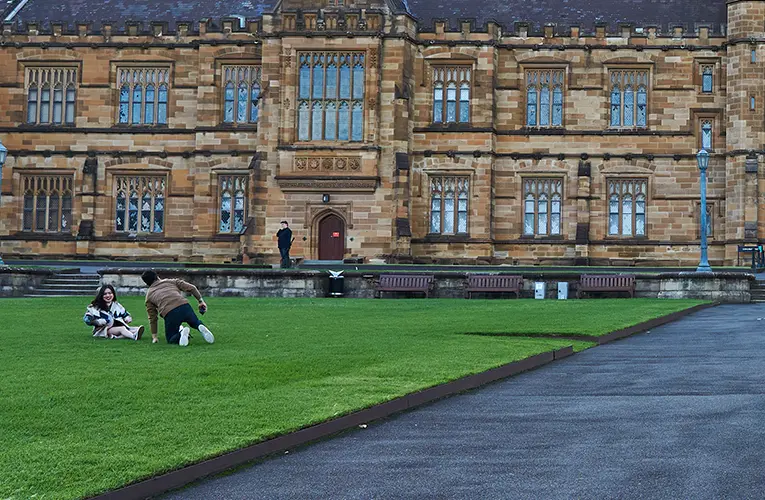Fostering the Next Generation of Innovators: A Look at Cutting-Edge STEM Education in Canadian Universities
Canada boasts a world-class education system, and its universities are at the forefront of innovation, particularly in the realm of Science, Technology, Engineering, and Mathematics (STEM) education. Recognizing the critical role STEM fields play in driving a knowledge-based economy and fostering scientific literacy, Canadian universities are constantly developing and implementing groundbreaking approaches to engage and empower students.
This article delves into the exciting landscape of STEM education in Canadian universities, exploring some of the most innovative initiatives that are shaping the future generation of scientists, engineers, mathematicians, and technologists.
Revolutionizing the Curriculum: Breaking Down Silos and Embracing Interdisciplinarity
Gone are the days of STEM education being confined to separate and isolated disciplines. Canadian universities are embracing a more holistic approach, recognizing the interconnectedness of these fields. Interdisciplinary programs are on the rise, allowing students to explore the fascinating intersections between science, technology, engineering, and mathematics.
For instance, a program combining computer science and biology might involve students developing bioinformatics tools to analyze genetic data. Similarly, an engineering and mathematics program could see students designing and building robots that utilize complex algorithms. This cross-pollination of knowledge fosters a deeper understanding of how STEM fields work together to solve real-world problems.
Learning by Doing: The Power of Project-Based Learning and Experiential Education
Canadian universities are moving away from traditional lecture-based pedagogy and placing greater emphasis on project-based learning (PBL) and experiential education. PBL allows students to tackle real-world challenges, encouraging them to apply their theoretical knowledge to practical scenarios.
Imagine a team of engineering students collaborating with environmental science students to design a sustainable water purification system for a remote community. This type of project-based learning fosters critical thinking, problem-solving skills, collaboration, and communication – all essential for success in the STEM workforce.
Experiential education takes PBL a step further by placing students in real-world settings, such as internships, co-ops, and research opportunities. Working alongside industry professionals allows students to gain invaluable hands-on experience and develop a deeper understanding of the practical applications of STEM concepts.
Harnessing the Power of Technology: From Virtual Labs to Big Data Analytics
Technology is transforming the way STEM education is delivered in Canadian universities. Virtual labs are blurring the lines between physical and digital spaces, allowing students to conduct experiments and simulations in a safe and controlled environment. This is particularly beneficial for programs that require access to expensive equipment or involve potentially hazardous materials.
Big data analytics is also making its mark on STEM education. Universities are incorporating data analysis tools and techniques into their curriculum, equipping students with the skills to extract meaningful insights from vast datasets. This prepares them for a future where data-driven decision making is paramount across all sectors.
Fostering a Culture of Innovation: Maker Labs, Hackathons, and Design Thinking
Canadian universities are cultivating a culture of innovation by providing students with access to maker labs and hackathons. Maker labs are collaborative workspaces equipped with tools and technologies that allow students to prototype, build, and test their ideas. These spaces foster creativity, resourcefulness, and the ability to translate ideas into tangible solutions.
Hackathons, on the other hand, are intense coding competitions where students collaborate to develop solutions to specific challenges within a short timeframe. This high-pressure environment encourages innovative thinking, problem-solving under time constraints, and teamwork.
Design thinking, a human-centered approach to problem-solving, is also gaining traction in STEM education. By incorporating design thinking principles into their curriculum, universities are encouraging students to develop empathy for users, identify problems, and iterate on solutions through prototyping and testing.
A Focus on Inclusivity and Diversity: Broadening Participation in STEM Fields
Canadian universities are actively working to diversify the STEM workforce by addressing issues of inclusivity and accessibility. This includes targeted outreach programs aimed at encouraging women, underrepresented minorities, and students from low-income backgrounds to pursue STEM education.
Universities are also developing initiatives to bridge the gender gap in STEM fields. These initiatives might involve mentorship programs for female students, workshops to address unconscious bias, and the creation of supportive learning communities for women in STEM.
Building Collaborations: Partnering with Industry and Government
Universities are recognizing the importance of collaboration with industry and government to ensure their STEM programs are aligned with the needs of the workforce. Partnerships with industry leaders provide invaluable insights into current trends and emerging technologies, allowing universities to tailor their curriculum accordingly.
These collaborations can also lead to exciting internship and co-op opportunities for students, further bridging the gap between academia and the professional world. Additionally, government funding can be instrumental in supporting innovative teaching methods, research initiatives, and the development of cutting-edge facilities.










